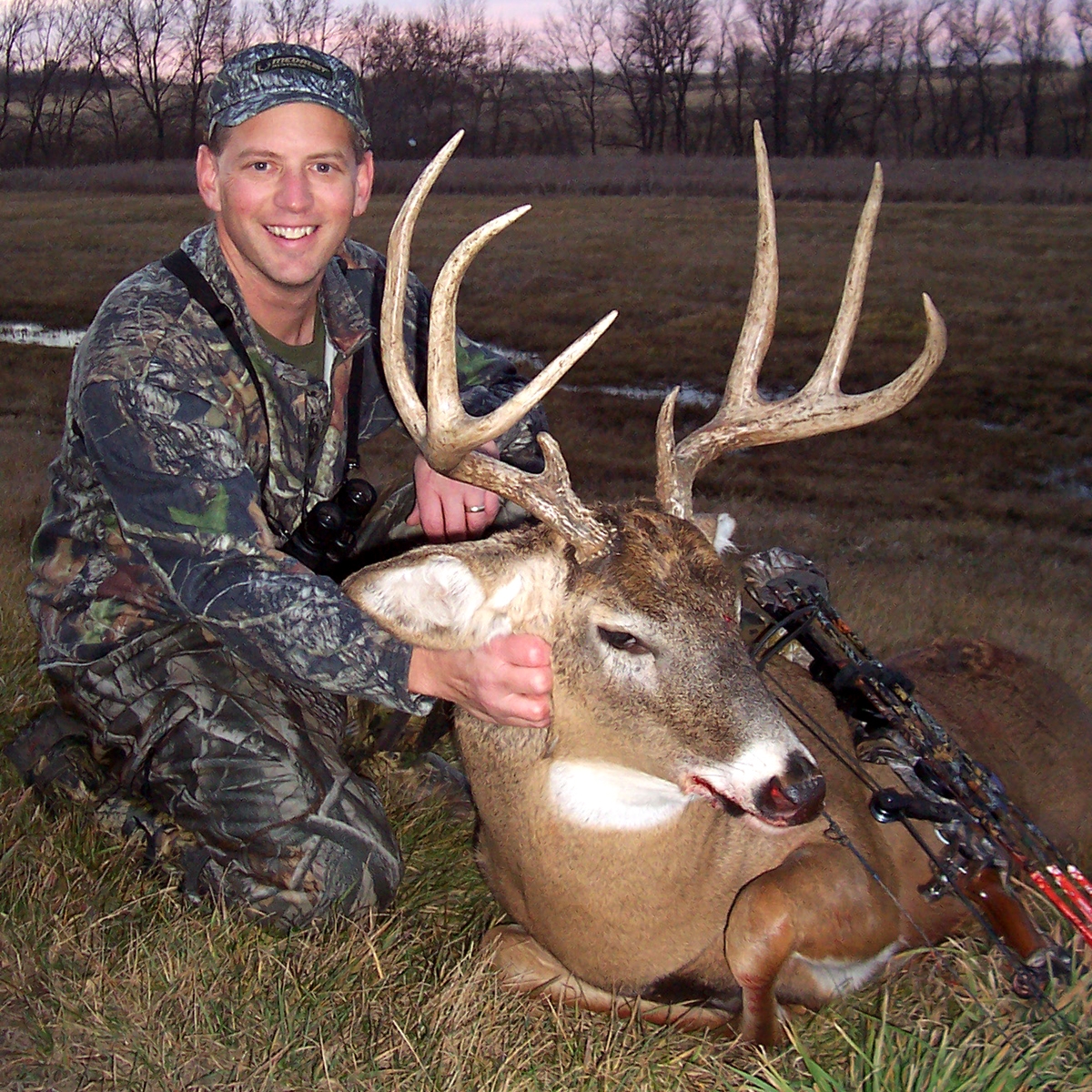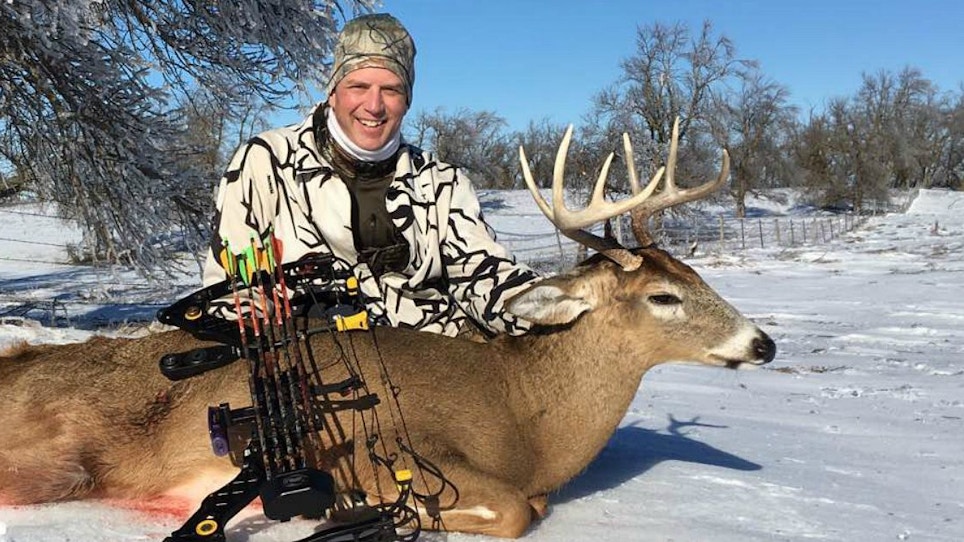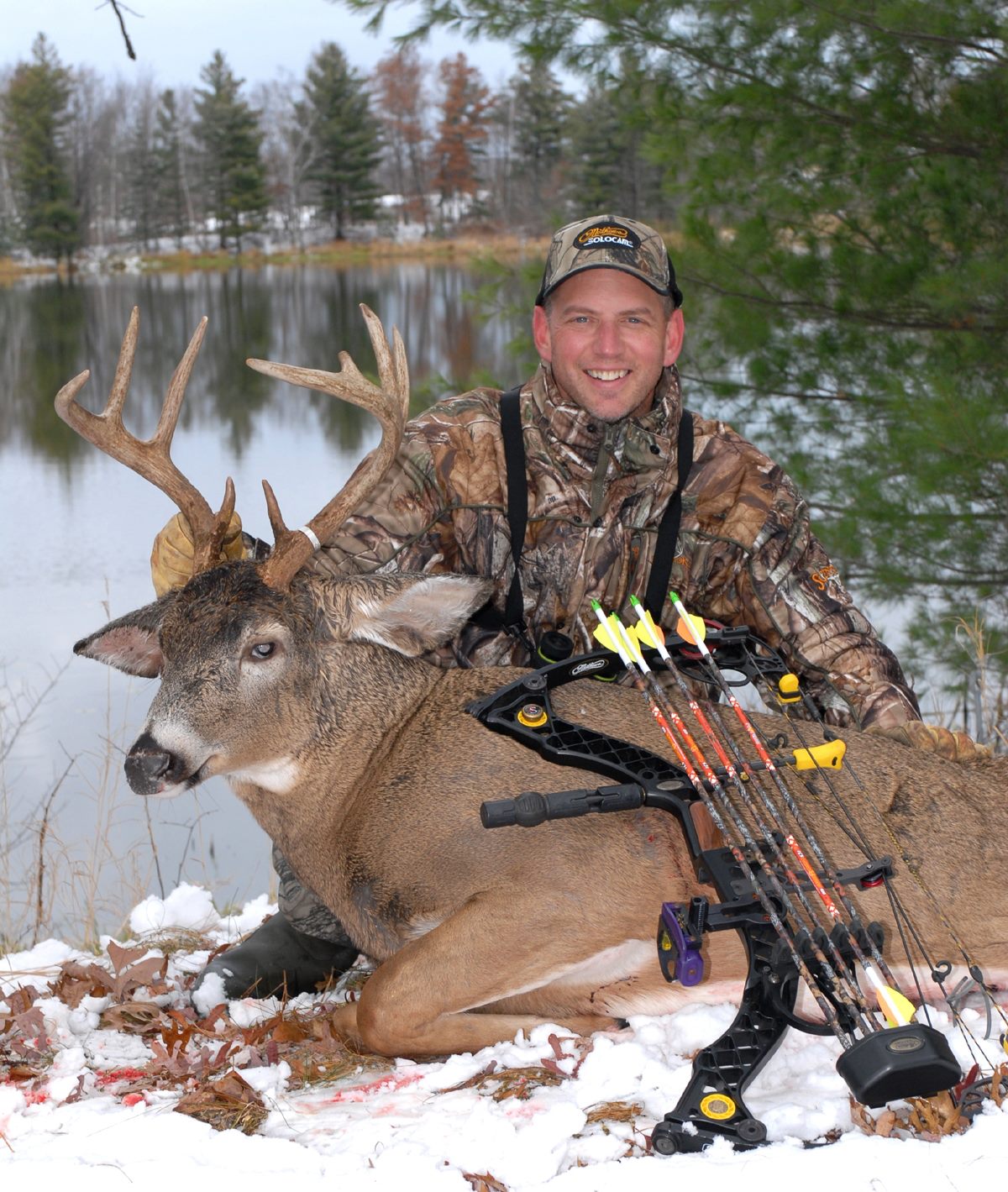At the risk of making many readers angry right off the bat, I’ll begin by stating my opinion on long-range shooting at game: I think it’s bad for bowhunting. Period.
Sure, I understand that it takes incredible dedication and skill to hit baseball-size bull’s-eyes at 40, 50, 60 yards and beyond. Your archery gear has to be first-rate, and the bow/arrow combo must be tuned to perfection. That said, I don’t care how many arrows you shoot, and I don’t care how much you try to mimic real-life hunting situations by practicing angled shots from awkward positions, there’s one thing you can’t duplicate during a practice session: animal movement.
Very simply, you can’t predict what an animal will do from one millisecond to the next, so the longer your shot, the greater the chance a buck or bull will move enough to result in a marginal hit or a miss. Of course, this problem is compounded if an animal is wary or in any way aware of your presence.
Example: You bleat to stop a moving whitetail buck. If you shoot the moment he puts on the brakes, you might be okay, provided he doesn’t jump the string at the sound of your bow firing. I say “might” because it’s all about the range.

In 2009 the author passed up shots on this buck at 40 yards, then 35 yards, then 30 yards; he eventually dumped the string when the buck walked by his treestand at 12 yards.
The Camera Doesn’t Lie
I dropped a P&Y pronghorn in his tracks because my arrow took him in the spine. I was sitting in a ground blind only 14 yards from the animal as he drank in a waterhole. He was cautious in his approach to the water, but not looking my direction. His mouth was touching water when I released the string of my very-quiet compound. The camera footage (we were filming a TV show) didn’t lie: The buck dropped at least 6 inches and began to spin away from me in the fraction of a second it took from arrow release to impact. Sure, I killed the buck, but I was lucky. If he’d dropped 1 more inch, I might still be tracking him across the Wyoming prairie.
I know what you’re thinking: At long range, say 30 yards and more, the ability of an animal to hear the bow fire is reduced, so the chance of an animal jumping the string is less.
Valid point. However, natural movement now becomes the bigger problem. Consider: A buck is feeding broadside in a clover field at 60 yards. You draw, anchor, aim and begin applying pressure to your release. You’re floating your 60-yard pin on the buck’s chest, waiting for a surprise release of the bowstring. Unfortunately, just as your release is about to fire, the buck decides that the clover is greener 12 inches ahead, and he takes a quick step. By the time your brain processes that the buck has moved slightly, you realize that the arrow is on its way. And instead of bragging to your buddies about smoking a buck through both lungs from 60, you’re hoping the gut-shot buck beds on your side of the property fence and you’re praying it gets cold enough during the night that the venison won’t be ruined by morning. Not good.
Attitude Adjustment
Many (perhaps most) readers will scoff at this advice, but that’s okay: In my opinion you should limit your shot distance on whitetails to 30 yards. And I’ll even make you shake your head in this-dude’s-crazy disbelief even more: You shouldn’t shoot if a buck is looking at you or is in any way showing signs that he’s on edge — regardless of the range.
What about bleating to stop a moving buck? I use this technique and it works well a lot of the time, but again, I’ll shoot only under certain conditions. First, I must be in a treestand. Bleating from the ground means a buck will likely be looking right at me when he stops, which is a perfect jump-the-string scenario. Second, the buck must be close, no more than 20 yards. Chances are good that he’ll react to the sound of a bow firing, and having him at 15 yards instead of 35 means the result will be a good hit instead of a marginal one.
Eating Tag Soup
Of course, if you take my advice, you should be ready to end the season with an unpunched tag. Entire archery seasons might come and go before a buck gives you a perfect shot opportunity. And that’s what I wait for; everything must be ideal before I’ll release an arrow.
There’s no “holding low on the heart” or “holding on the bellyline” in anticipation of an alert buck jumping the string. I don’t care if the animal is a 7-year-old Booner and you have his sheds from three prior seasons; if he knows you’re there, and he’s looking in your direction, you owe it to the animal — you owe it to the sport — to admit that the buck wins this battle. Let him walk.
If a buck comes from behind your treestand and doesn’t appear in a shooting lane, it’s unacceptable to hope an arrow finds its way through leaves and twigs and finds its mark. Don’t shoot, regardless of the distance or size of the buck. Let him walk.
You’ve no doubt read archery advice from other outdoor writers that you should take the first good shot. I disagree. I pass up good shots all the time while waiting for a great shot — a perfect shot.
Every close-range encounter with a mature animal is a success; you don’t need to let an arrow fly just because a whitetail buck wandered within 60, 50, 40 or 30 yards of your treestand. To me, 40 yards might as well be 400. Sure, I can drill paper bull’s-eyes and foam targets at 40 or 50, or 60, but they don’t bleed.
If I bowhunt enough days, and if I hold off long enough, at some point during the season a buck will probably walk by my treestand, totally unaware of my presence, and stop, slightly quartering-away, at 9-15 yards. And it’s then, and only then that I let an arrow go and end my season with a punched tag.
P.S. My longest shot attempt on a whitetail in 40 years of bowhunting? Exactly 24 yards, on the 2016 South Dakota buck shown in the photo at the top of this article.

This South Dakota 4x4 approached a doe decoy and allowed the author a rare opportunity for a bowhunter/buck selfie.







